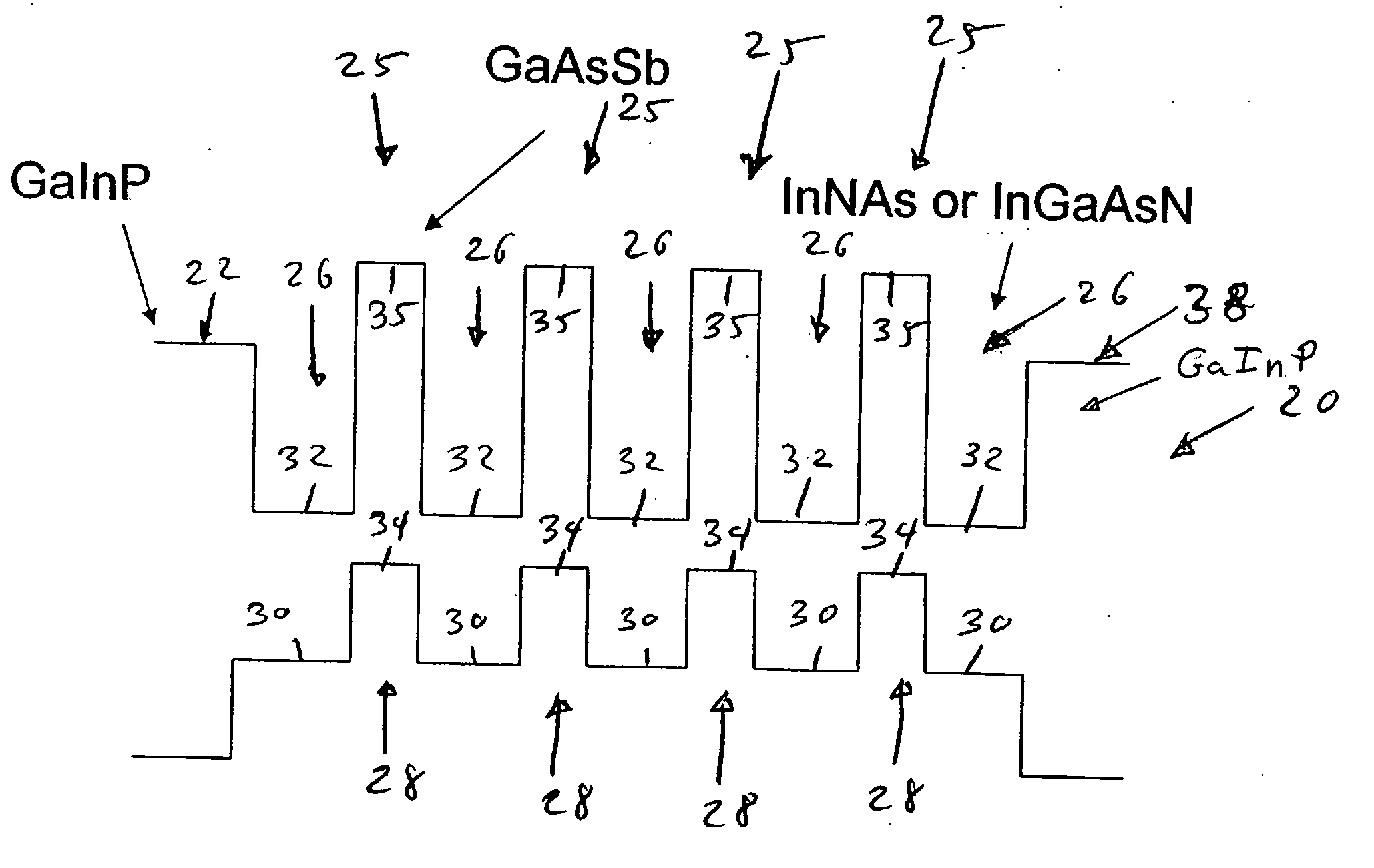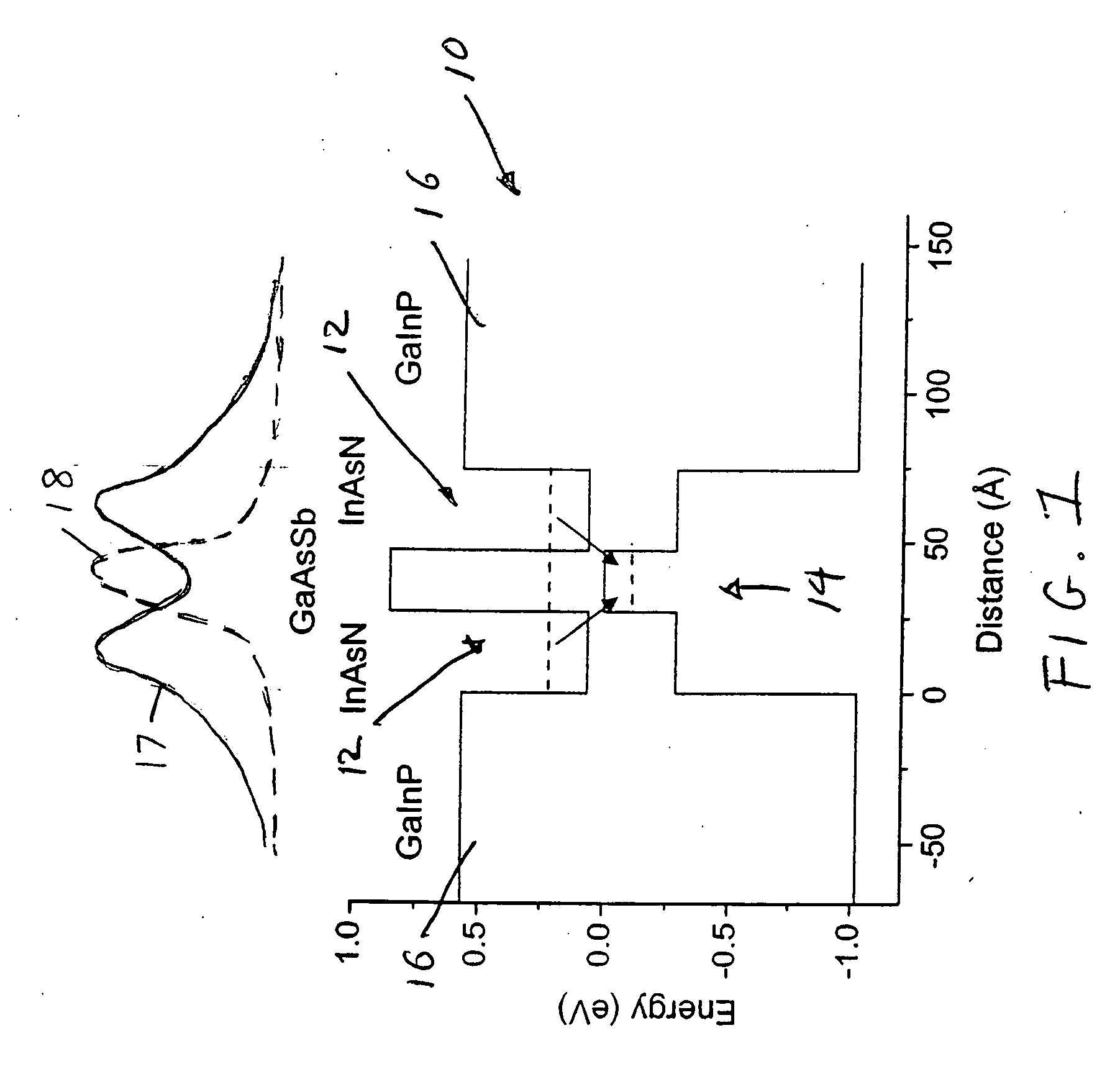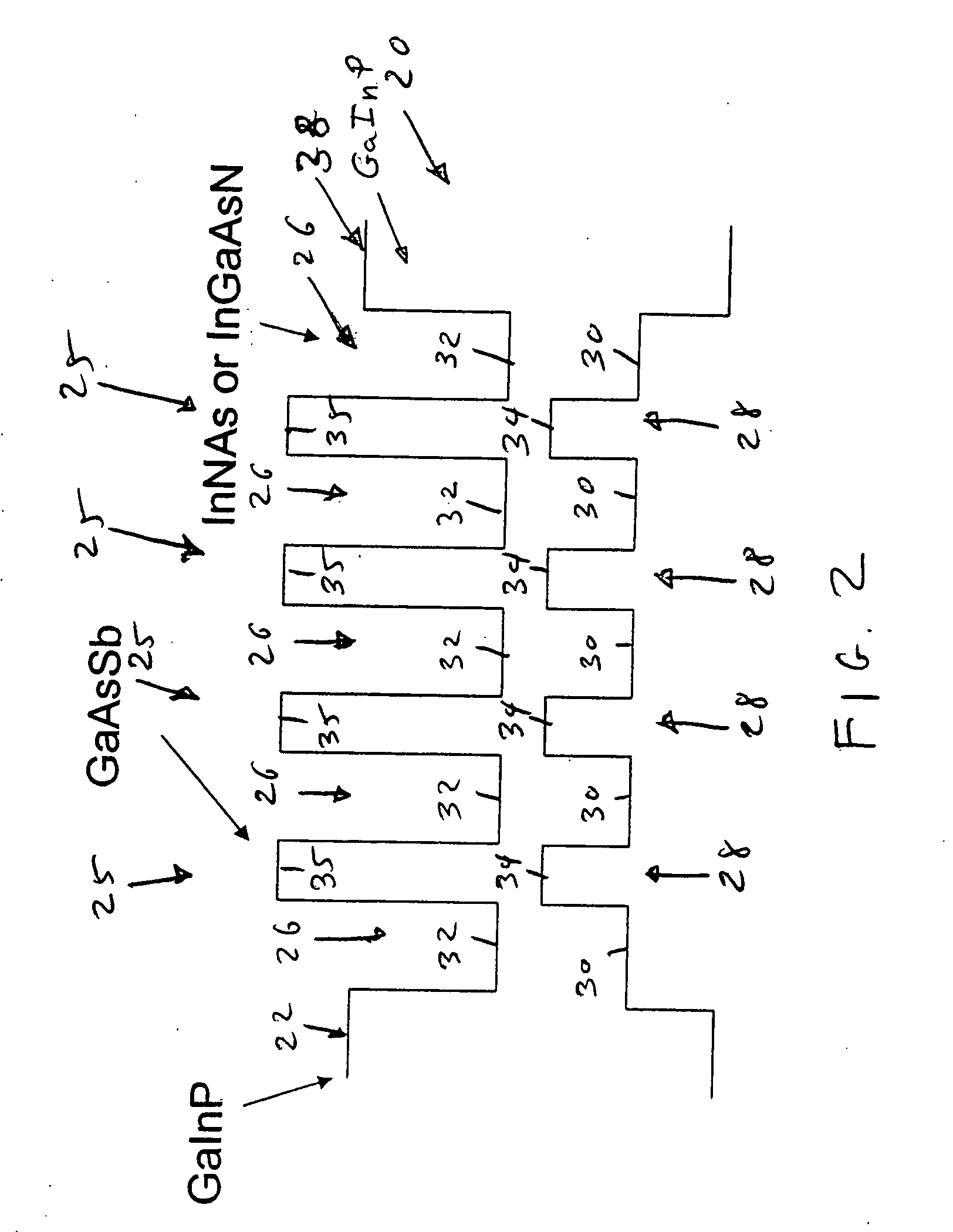Type II quantum well mid-infrared optoelectronic devices
a technology of optoelectronic devices and quantum wells, which is applied in the direction of lasers, semiconductor devices, semiconductor lasers, etc., can solve the problems of significant increase in laser packaging costs, inherently high temperature sensitive, and severely affecting the performance of cw (continuous wave)
- Summary
- Abstract
- Description
- Claims
- Application Information
AI Technical Summary
Benefits of technology
Problems solved by technology
Method used
Image
Examples
Embodiment Construction
[0026] The present invention provides a novel approach to achieving 2-5 μm lasers and other optoelectronic devices on conventional InP substrates to achieve high-performance, efficient, and room temperature operational sources. The invention utilizes a type-II active region, preferably with multiple-quantum-wells (MQWs) having a modified ‘W’-shape profile, with built-in strain-compensation, strong carrier-confinement, and large electron-hole wave function overlap.
[0027] In accordance with the invention, rather than employing type-I InGaAsN quantum wells (QWs) with high N-content, longer wavelengths may be accessed more readily via type-II InAsN / GaAsSb or InGaAsN / GaAsSb structures. The energy gap in a type-II structure is governed primarily by the relative conduction and valence band alignments in the two adjacent layers rather than by the bulk gap in a single layer. The resulting flexibility comes at the expense of reduced overlap between the electron and hole wave functions that n...
PUM
 Login to View More
Login to View More Abstract
Description
Claims
Application Information
 Login to View More
Login to View More - R&D
- Intellectual Property
- Life Sciences
- Materials
- Tech Scout
- Unparalleled Data Quality
- Higher Quality Content
- 60% Fewer Hallucinations
Browse by: Latest US Patents, China's latest patents, Technical Efficacy Thesaurus, Application Domain, Technology Topic, Popular Technical Reports.
© 2025 PatSnap. All rights reserved.Legal|Privacy policy|Modern Slavery Act Transparency Statement|Sitemap|About US| Contact US: help@patsnap.com



